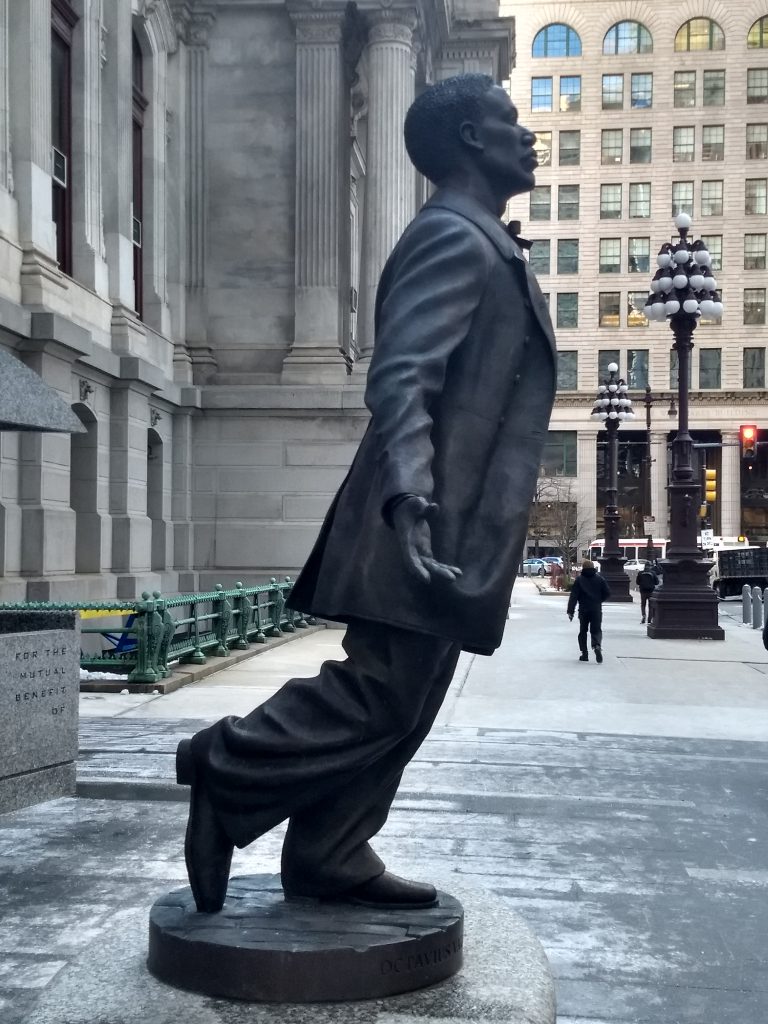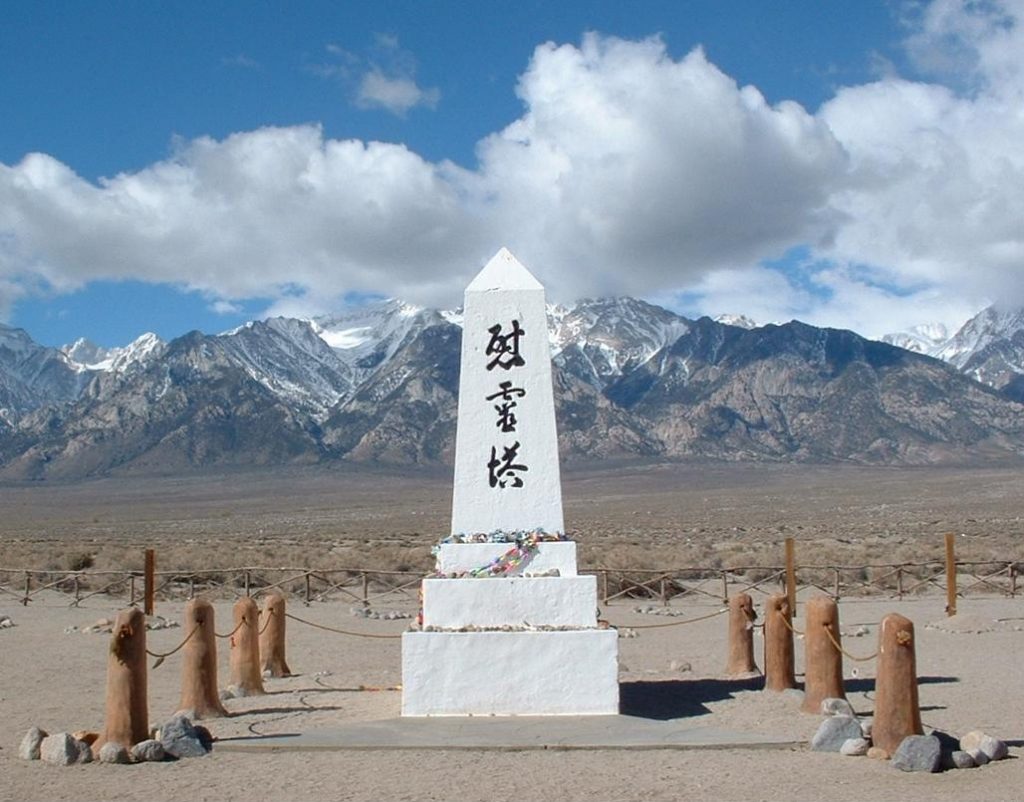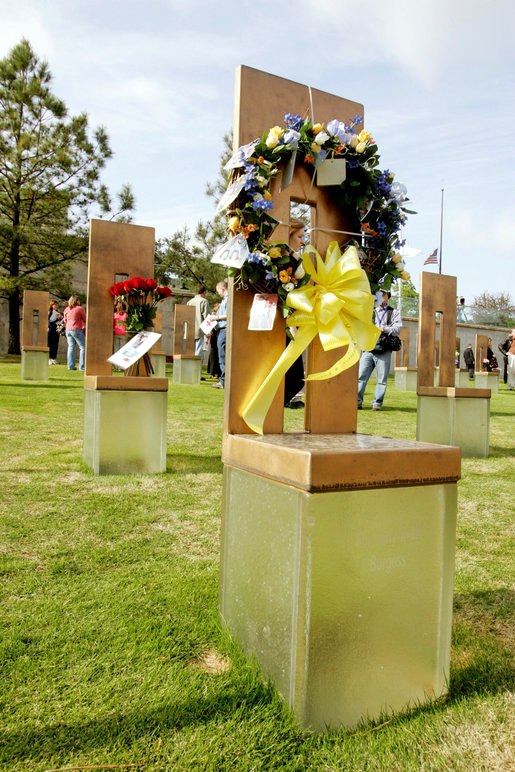
Memorials and monuments punctuate our lives. Many of us are taught to revere them early on—in town squares, at museums, throughout our national parks, and everywhere in between. We may repeat the ritual with our own children, who may someday bury us beneath smaller though no less meaningful monuments. All the while, we live our lives before the silent gaze of granite soldiers, towering obelisks, historic buildings, roadside crucifixes, memorial bridges, and no end of scattered mementos. Some of them were left by ancestors for reasons that may be obscured by time. Some appear as if overnight, often born of grief for a loved one lost to violence or disregard. People have given their lives in the service of monuments; others have killed to protect them. Love, hate, fear, faith, determination, and deception all inhere in our nation’s commemorative landscape. But what do we really know about these silent sentinels?
We know quite well from our vantage point in the early twenty-first century that memorials, monuments, and other expressions of our nation’s complex public memory are not, in fact, as silent as we might suppose. They have, rather, since the beginning of our national saga, witnessed and prompted impassioned dissent, vocal nationalism, and sometimes lethal violence. We know too from decades of scholarship that memorials and monuments trade in all matter of perceptual trickery. One person’s hero was another’s worst enemy. One town’s achievement meant another’s demise. One empire’s victory signaled the death of families and kingdoms and ecosystems elsewhere. Choices made about which of these memories to enshrine, and which ones to erase, are the messages that memorials and monuments convey today. In this sense, then, memorials are never silent, and they certainly do not reflect consensus. They are rather arguments about the past presented as if there were no argument.
We need monuments, even despite their tendency to misrepresent. At their best, monuments can bind us together and fortify our communities in the face of tragedy or uncertainty. They can also remind us that to be great is worthy of aspiration. The meaning of greatness, however, is never fixed. Indeed, how we define it—how, that is, we choose to remember—has become a matter of pointed concern, especially as Americans seek to expand opportunity among those whose forebears were so long erased from public memory. Is it possible to change a monument’s meaning once it has been built? Is there such a thing as a public memorial that respects the infinite diversity of the American public? These and other questions underlie what headlines and pundits characterize as our nation’s “monument wars,” longstanding contests of memory wherein the very meaning of citizenship is up for grabs.
Defining Terms: Memory, Commemoration, Monuments, and Memorials
Making sense of our monument wars and their history is complicated by the variety of words that are used, often interchangeably, to describe them. Words such as “monument,” “memorial,” and “commemoration” all share in their deep history a root in another complicated word: “memory.” Memory, of course, is as old as humankind, and perhaps older. Historians study memory, as do neuroscientists, physiologists, physicists, sociologists, philosophers, and others besides. The remarkable scope of memory studies and the field’s growth in recent decades, signals how deeply memory runs through all facets of modern life. Historians cannot make sense of memory alone. We have, however, made important contributions to the conversation, especially concerning memory’s capacity to shape ideas about nation and citizenship.
In the United States, for instance, leading memory scholars—including Michael Kammen, David Blight, James Young, and Erika Doss—have advanced a set of propositions, drawn from an array of social and cultural theory, that explain how memory promotes a common sense of American identity over time and across lines of difference. They include the possibility that, in addition to each person’s individual memory, there exists a collective memory too—a stew of facts and images and stories—that shapes and is itself shaped by our personal recollections. There is also the notion that memory can reside in objects and places, and that attending to these is one way that nations sustain our loyalties. Historians are concerned, too, with traumatic memories, such as those associated with war and genocide, and have recently begun to explore the monument’s capacity to aggregate and deploy deep wells of emotion. Running through all of this is an awareness that, if we listen closely, monuments can speak volumes about the intent of their makers. They usually tell us more, in fact, about the people who made them than whatever it is that they commemorate.
The monuments and memorials we are concerned with, then, are expressions of public memory. They are born of individuals whose personal memories get bound up by some common interest within some common corner of some community’s collective memory. The process whereby this confluence of individual memories is vetted and repackaged for public consumption is what we refer to as commemoration. Commemoration itself can be an event, such as is the case with some parades, festivals, and even the preservation of old buildings. What we witness in those instances is a process whereby individuals are instructed—both by watching and by participating—in the performance of fealty to a shared set of ideas about the past: the war was noble, our ancestors were great, remembering is patriotic. These are powerful lessons, so much so that commemoration tends to obscure the possibility of believing otherwise.
The terms that we use to describe the products of commemoration, words such as “monument” and “memorial,” may vary in purpose. “Monument,” for instance, usually refers to a commemorative structure or edifice, whereas “memorial” applies to almost anything—including buildings, books, roads, stadiums—that recalls the dead or the experience of profound loss. The Lincoln Memorial, in Washington, D.C., is also a monument, because the structure itself functions as a well of national regard for Lincoln’s sacrifice and vision. Across town, however, only sports fans likely consider the Robert F. Kennedy Memorial Stadium a monument. Its tribute to Kennedy’s memory is in name alone. The rules are neither hard nor fast. The National Park Service, for instance, applies the designation “monument” to any unit—whether or not it foregrounds commemoration—that is established by executive order. More significant than these shades of meanings is the ubiquity of words such as “monument” and “memorial” in our daily lives. Language reveals the extent to which memory surrounds us everywhere and always.

A Brief History of Commemoration in the United States
There is nothing that obligates Americans to remember in the ways that they do. Indeed, the nation’s founders railed against the excesses of memory. In their eyes, the corrosive influence of ancient traditions—such as those that sustained Britain’s monarchy and its landed aristocracy—was precisely what prompted the American Revolution. So how then did commemoration end up being so prevalent in the United States?
Two common explanations deploy two different histories: one deep, the other more recent. In the first case, the American preoccupation with commemoration, and especially the mingling of objects and memory, reaches all the way back to medieval Europe. The early Christian church, as the story goes, sought by the ninth century to entice converts by deploying an array of sacred objects, the so-called cult of saints’ relics. The appeal of these relics—bits of hair, bone, and other vestiges of bygone saints—resided in their power to connect worshipers to the divine, literally, through touch or by mere proximity. Elaborate rituals of belief grew up around these objects and the reliquaries that contained them. Increasingly their power mingled, in early modern Europe, with secular objects of curiosity gathered by explorers and exhibited alongside relics in cathedrals, princely chambers, and curiosity cabinets. Mastery of worlds, human and divine, might be had by whomever could amass the largest collection. Even mystics and clerics got in on the game, imagining elaborate memory theaters from within which one might see, and thus learn to recall, knowledge of all times and places. The ways of knowing associated with these practices, as has been shown by Stephen Greenblatt and cleverly illustrated by Lawrence Weschler, penetrated western culture so deeply that they travelled along with Europeans into North America. Modern-day museums thus recall the ancient impulse to venerate remarkable objects, as do memorials and monuments where visitors might commune with the past by bringing themselves near to all manner of markers and cenotaphs.
In the other case, made by historians such as Alfred Young and Laurel Thatcher Ulrich, American commemorative preoccupations are associated with a sense of historical discontinuity that seems to have originated by the 1770s, during the “Age of Revolution,” and which reached a fevered pitch by at least 1900. This story explains why, though the founding generation distrusted monuments, the deaths of its most prominent leaders—first George Washington and, later, Thomas Jefferson—prompted an early wave of commemorative activity by the 1820s. The Civil War, of course, exacerbated this sense of historical rupture and set into motion a commemorative spree that has not yet abated. By the end of the nineteenth century, Americans erected obelisks, collected old things—clothes, quilts, furniture, tools, and more—opened museums, founded historical societies, preserved old homes, and staged fetes and festivals all in hopes of staving off their nagging concern that something had been lost amid the ravages of modernity. Their efforts, especially during the years spanning the World Wars, were so expansive that much of the commemorative infrastructure they built remains today.
Since World War II, Americans have experimented with new commemorative forms. During the postwar years, named municipal buildings and commemorative highways replaced a previous generation’s fondness for granite soldiers and obelisks. Monuments to shared loss have also become increasingly common. Inspired by Maya Lin’s widely influential 1982 Vietnam Veterans’ Memorial, modern monuments often feature abstract forms and reflective surfaces in place of the figurative literalism preferred a century ago. Impermanent or impromptu memorials have also become a staple of modern commemorative practice. Mounds of stuffed animals, ghost-white bicycles, roadside shrines with hard-hats and t-shirts, car windows airbrushed with sentimental tributes, tattoos, and scores of commemorative websites all reveal our own era’s concern to mourn publicly. It is a shift, as Erika Doss argues, that signals a new period in our commemorative history, one wherein national belonging is reckoned emotionally in acts of public feeling.

The Contours of Memory
Commemorative trends notwithstanding, memorials and monuments are endlessly diverse insomuch as acts of public memory always reflect the particularities of time and place. An uneasy grid of concrete slabs recalls the Holocaust at the Memorial to the Murdered Jews of Europe in Berlin, Germany. The “Door of No Return”—part of the Maison des Esclaves on Senegal’s Gorée Island—commemorates the terrors of the Atlantic slave trade. And a commemorative complex in Vietnam’s Quảng Ngãi Province testifies to the rape and slaughter of civilians by U.S. Army soldiers in a place Americans remember as My Lai. These monuments demonstrate that commemoration need not always seek resolution. Indeed, commemorating sites of shame offers an important corrective to triumphant portrayals of the past that inevitably obscure historical complexity. Monuments like these, that are indelibly bound up with American history abroad, also remind us that memory is not confined to national borders. The circulation for centuries of people, capital, and ideas has ensured that all of our memories are entwined within deep networks of global remembrance.
Some monuments and memorials seek to redress lapses in what is presented as “official” public memory. The Sand Creek Massacre National Historic Site in Colorado, for instance, now insists—after more than a century of white Coloradans deliberately mischaracterizing the massacre as a battle—that the Arapaho and Cheyenne be reinscribed onto our national memory of westward expansion, which for generations has either omitted Native Americans or dismissed them as mere obstacles to progress. Such is the function of so-called counter monuments. Counter monuments, as James Young suggests, demand a reappraisal of collective memory by demonstrating awareness of their own contrivance. They do so, in some cases, by insisting on the inclusion of people—and, sometimes, entire segments of American society—that have been persistently absented from public memory. In 2017, Philadelphians honored Octavius V. Catto with a statue, the first ever in Philadelphia to commemorate an individual of African descent. Elsewhere, counter monuments do their work by modifying extant monuments or presenting them in a different light. Artist Krzysztof Wodiczko complicated our understanding of the Bunker Hill Monument in Charlestown, Massachusetts, for instance, with a temporary 1998 installation that projected onto its sides towering videos of mothers torn by the loss of children to neighborhood street violence.
Removing or relocating monuments and memorials can also reveal the deep intensity of contested memory. Beginning in 2015, in response to a mass shooting at the Mother Emanuel AME Church in Charleston, South Carolina, cities across the United States—including New Orleans, Baltimore, and Los Angeles—opted to remove monuments valorizing the Confederacy and white supremacy from courthouses and parks. Scores of these monuments had been erected throughout the twentieth century to legitimize white supremacy and otherwise shift Americans’ commemorative gaze away from the degradations of slavery. The removal campaign turned violent in August 2017 when white supremacists and their supporters rallied in Charlottesville, Virginia, ostensibly in defense of a monument portraying Confederate General Robert E. Lee. Clashes with counter-protesters resulted in one death and multiple injuries, and appeared to many Americans as a metaphor for the heated debates about race and citizenship that consumed the nation during the presidential election of 2016.
Tomorrow’s Monuments and Memorials
Removal debates remind us that commemoration is always political. Even the most benign monuments are products of choices made about how to remember, what to remember, and how to pay for it all. Faced with this certainty, then, how might we create monuments today that speak beyond our immediate concerns, and to audiences who may not remember in the same ways that we do? History shows us that a good first step is to engage as many constituencies as possible in the commemorative process. Commemoration grows from conversation, and as such should include as many voices as possible. Archiving the conversations that produce monuments is another important step. By preserving a record of our deliberations over public memory, we leave for future generations an indication of what is at stake in our commemorative aspirations. Above all, we must remember that monuments and memorials are neither silent nor innocent. The harder we think about their meanings today, the more likely they are to speak with clarity tomorrow.
Suggested Readings
Allison, David B., ed. Controversial Monuments and Memorials: A Guide for Community Leaders. Lanham, MD: Rowman & Littlefield/AASLH, 2018.
Bruggeman, Seth C., ed. Commemoration: The American Association for State and Local History Guide. Lanham, MD: Rowman & Littlefield, 2017.
Doss, Erika. Memorial Mania: Public Feeling in America. Chicago: University of Chicago Press, 2010.
Duppstadt, Andrew, Rob Boyette, and Sgt. Damian J.M. Smith. “Planning Commemorations.” Technical Leaflet 241. American Association for State and Local History.
Glassberg, David. “Public History and the Study of Memory.” The Public Historian 18, no. 2 (Spring 1996): 7-23.
Savage, Kirk. Standing Soldiers, Kneeling Slaves: Race, War, and Monument in Nineteenth-Century America. Princeton: Princeton University Press, 1999.
Reconsideration of Memorials and Monuments. A special edition of History News 71, no. 4 (Autumn 2016).
Author
~ Seth C. Bruggeman is an associate professor of history at Temple University, where he directs the Center for Public History. His books include Commemoration: The American Association for State and Local History Guide (Rowman & Littlefield, 2017), Born in the USA: Birth and Commemoration in American Public Memory (University of Massachusetts Press, 2012), and Here, George Washington Was Born: Memory, Material Culture, and the Public History of a National Monument (University of Georgia Press, 2008). You can follow him on Twitter @scbrug and explore his website at https://sites.temple.edu/sethbruggeman.
